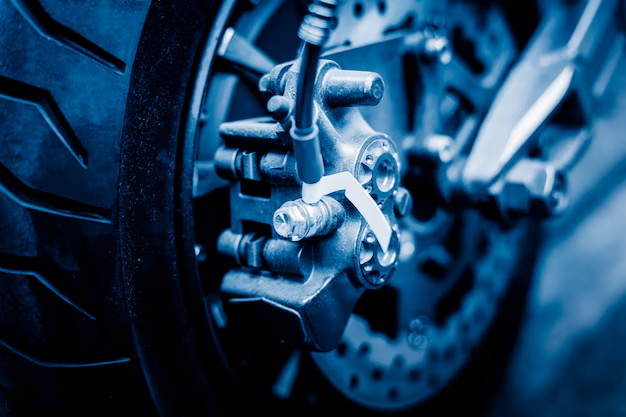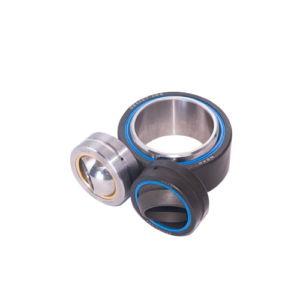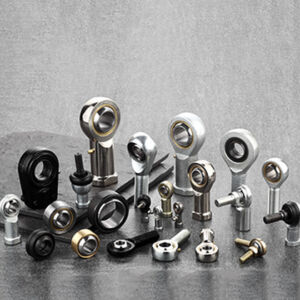Product List
Send your inquiry
Contact Us
Motorcycle Bearings
Bearings For Cars and Motorcycles
Bearings are essential components for cars and motorcycles, ensuring that various components operate smoothly and efficiently. In cars, bearings are used in wheels, transmissions, engines, and steering systems. Wheel bearings are typically roller or tapered roller types, supporting the weight of the vehicle and allowing the wheels to rotate with minimal friction. Engine bearings, such as main and connecting rod bearings, help manage the high loads generated by the engine's moving parts. Transmission bearings, such as needle and ball bearings, ensure smooth shifting and durability under high-speed conditions. Bearings are equally critical for motorcycles, especially considering their exposure to high speeds and vibrations. Wheel bearings provide stability and reduce friction, thereby improving performance and safety. Engine and transmission bearings withstand high temperatures and loads, supporting the high speeds common in motorcycles. Both vehicles rely on sealed bearings for added protection from dust, moisture, and debris, ensuring long life and reliable performance on the road. Spherical plain bearings are a specialized component that plays a vital role in a variety of motorcycle applications, especially where misalignment and high loads are common. Spherical plain bearings are used in suspension linkages and pivot points to allow angular movement and accommodate misalignment between the frame and the swingarm. In some motorcycle steering systems, spherical plain bearings are used at the steering head and front fork joints to allow free movement while supporting the weight of the motorcycle. Spherical plain bearings are used at the swingarm pivot point that connects the swingarm to the motorcycle frame. NSAR has the ability to produce large quantities of bearings, with clean workshops and skilled workers. View all our product models.
Spherical plain bearings are a specialized component that plays a vital role in a variety of motorcycle applications, especially where misalignment and high loads are common. Spherical plain bearings are used in suspension linkages and pivot points to allow angular movement and accommodate misalignment between the frame and the swingarm. In some motorcycle steering systems, spherical plain bearings are used at the steering head and front fork joints to allow free movement while supporting the weight of the motorcycle. Spherical plain bearings are used at the swingarm pivot point that connects the swingarm to the motorcycle frame. NSAR has the ability to produce large quantities of bearings, with clean workshops and skilled workers. View all our product models.
Types of automotive and motorcycle bearings:
Ball bearings Roller bearings
Needle bearings
Tapered bearings
Hub bearings
Spherical plain bearings
Key features:
High precision, performance and efficiency
Resistant to vibration and high-speed rotation
Enhanced corrosion resistance (especially for motorcycles)
News:
How Many Oil Seals Does a Car Have?
Needle Roller Bearings by SizeApplications:
Cars, trucks, motorcycles, ATVs and other vehicles.
Technical Specifications:
| Category | Specifications | Applications | Characteristics |
| Small Bearings | 5-15 mm inner diameter | Gearbox, Clutch Assemblies | Compact size for tight spaces, suitable for high-speed rotations |
| Medium Bearings | 15-50 mm inner diameter | Wheels, Swingarm, Suspension | Common size for load-bearing parts, providing good load capacity |
| Large Bearings | Over 50 mm inner diameter | Heavy-duty wheel hubs, Suspension systems | Higher load tolerance, used in larger motorcycle models |
| Custom Sizes | Varies | Performance or custom builds | Tailored for specific high-demand applications |
Frequently Asked Questions in the Use of Automobile and Motorcycle Bearings

1. How often should automobile and motorcycle bearings be checked or replaced? Answer: Bearings should be checked during regular maintenance, usually every 20,000 to 30,000 miles for cars and motorcycles, depending on usage. High-performance or off-road vehicles may need to be checked more frequently. Replacement intervals vary, but for example, wheel bearings can often last 100,000 miles or more if properly maintained.
2. What are the signs that bearings need to be replaced?
Answer: Common signs include abnormal noises (buzzing, grinding, or squeaking), excessive vibration, uneven tire wear (wheel bearings), and reduced steering smoothness or stability. Noticeable looseness or unusual movement of the wheel may also indicate bearing wear.
3. Can I still drive my car if I have a problem with the bearing?
Answer: Not recommended. Bearing failure can cause steering and handling problems, increasing the risk of an accident. In severe cases, the bearing may seize, which may result in wheel loss or other component damage.
4. What type of lubrication is best for automobile and motorcycle bearings?
Answer: For most automotive and motorcycle bearings, a high-temperature, high-quality grease is recommended. Look for a lubricant that can handle the specific load and speed requirements of your vehicle. For example, wheel bearings require a grease with excellent water and heat resistance.
5. How can I prevent contamination from affecting my bearings?
Answer: Use high-quality sealed bearings, especially in areas exposed to dust, water, or debris. Check seals and gaskets regularly and replace if necessary.

